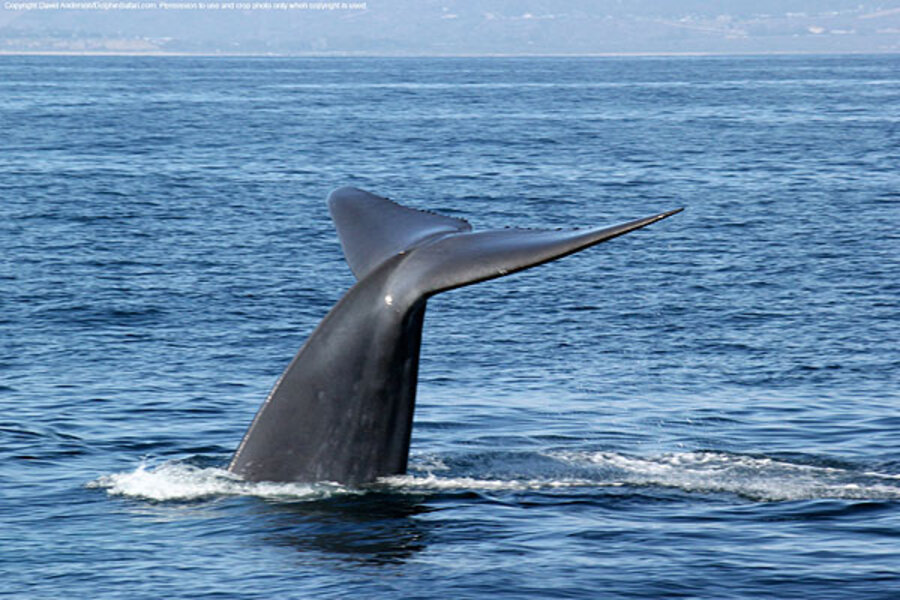Blue whales, whale watchers flocking to California coast
Loading...
| Santa Cruz, Calif.
Grab your camera and binoculars: There's rarely been a better time to go whale-watching off the California coast.
Tourists from around the world have been flocking to Monterey Bay to catch a glimpse of the massive marine mammals, including impressive numbers of blue whales, the largest animals on earth.
Longtime observers say they've seen a sharp increase in endangered blue and humpback whales feeding near California shores, where they spend the spring and summer before heading to their winter breeding grounds off Mexico and Central America.
"It's phenomenal that these humongous creatures are out there and we just get to go out on a boat and go out and watch them," said Santa Cruz resident Susan Stuart after a recent whale-watching cruise.
What's bringing the whales so close to shore? A bumper harvest of their favorite food: tiny, shrimplike critters known as krill.
Strong northwest winds have been pushing up cold, nutrient-rich waters from the ocean bottom — a phenomenon known as upwelling. That has fueled blooms of phytoplankton that have led to an explosion of krill, the main food source of blue and humpback whales.
"The season overall has been pretty exceptional and we're not done," said Nancy Black, a marine biologist with Monterey Bay Whale Watch, which offers bay cruises twice daily.
The abundance of whales has been a boon to boat tour operators in Monterey Bay, whose deep underwater canyon makes it one of the best places to see whales, dolphins and other marine life.
"The word is out right now. If you want to see a whale or blue whale or several species of whale, now's the time to go for sure," said Ken Stagnaro, co-owner, Santa Cruz Whale Watching, who estimates business has doubled this year over last year.
But the rebound in whale populations has led to a new problem: more collisions with the giant cargo ships heading in and out of San Francisco Bay, one of the world's busiest ports, experts say.
"When a ship strikes a whale, it's usually not a good outcome. Often times the vertebrae are broken and the whale dies," said Maria Brown, superintendent of the Gulf of the Farallones National Marine Sanctuary.
Federal officials are working with conservation groups and the shipping industry on a plan to help protect the whales around San Francisco Bay. They want to reroute ship traffic and improve tracking of whales to reduce collisions.
Conservationists want to ensure that future generations get a chance to see the world's largest animals.
"When you see a whale in the wild, it's a life changing experience," said Maureen Gilbert, an on-board naturalist for Santa Cruz Whale Watching. "You're never the same person after you've had that kind of encounter with a wild animal."





